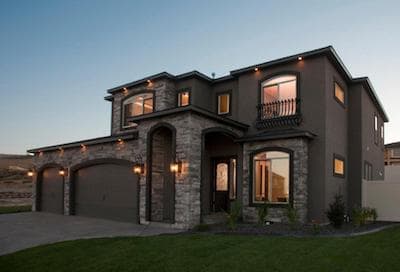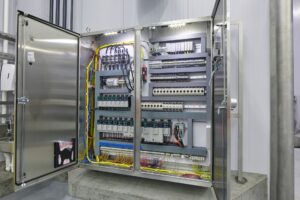
Blog post updated on February 3, 2019
Building a new home is an exciting but hectic time. There are so many choices to make: colors, textures, layout, and design. The more prepared you are before actual construction starts, the better your decision making will be beforehand. This will prevent costly delays from occurring.
This goes beyond single-family home construction as well. Multi-family housing, retail establishments, and any other large-scale construction project depend on planning. Commercial projects rely on junction boxes, electrical outlets, and even cable staples, too. Just on a much larger scale.
New Residential Construction Wiring
Electrical systems are often overlooked because we just assume our new home will be wired for outlets and lights. But today’s homes are much different than the past. We expect good lighting, we use microwaves, washers, dryers, and many electronic devices.
With proper planning, you can wire for high-speed internet and home networking, lighting controls, automated heating, and cooling systems. A slave to your smartphone? You can control your home from the palm of your hand with technological advances in home security, lighting, and more.
Talk to your electrician about all the systems available. Then you can decide whether you install them now or at a later date. The electrician can install pre-wiring or raceways for adding wire or routing cable at some point in the future. This way you can “future proof” your home for years to come.
New Wiring for Apartments and Mixed-Use Facilities
When it comes to a single-family home, the planning is pretty straight forward for a licensed electrician. Tying together a family room, kitchen, and other living spaces to a centrally located panel can be easily planned. The cost of electrical cable for a house is vastly different than an 80-unit apartment building with ground floor retail.
Larger projects, planning will also take financial considerations into account. This includes labor as well as material. Someone needs to drill the holes and then run the cable through those holes at some point. Depending on the luxury-level of the complex, some features will need to be left behind.
A matter of efficiency is also a concern. Running thousands of feet of electrical wiring through wall studs, ceiling joists, and hundreds of electrical boxes isn’t easy. However, there is an advantage with new construction: all of the framing is exposed.
New Construction Wire Permitting
In addition to saving time and money, planning for any new construction is required by law. Permit departments are kept busy reviewing, amending, and approving building plans. Inspections are performed throughout the process to make sure the wiring is safely installed and working correctly.
This aspect of new construction electrical work cannot be overstated. If the electrical work hasn’t been properly planned, permits can be denied. This means work can be delayed and fines can be handed down if work has begun. Making sure you have enough outlets in the kitchen is nice. Making sure you can start work is much more important.
New construction projects, no matter the size, are exciting times. A family will get a new home, a neighborhood may get a new restaurant, or a community will be welcoming new retail business. But before the first wire is snipped and crimped, all of the planning needs to be taken care of.
Prairie Electric has been providing electrical services for more than 35 years, employing more than 200 qualified electricians in the area. We can help you plan and install the electrical system for your new construction project. Give us a call today – we look forward to hearing from.


